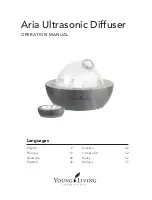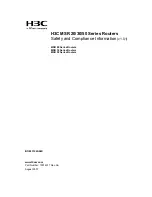
2
Wiring and Cables You Need
The following wiring and standard connectors are used with this product:
-
New or existing unshielded twisted-pair wiring (CAT3 or better). The CAT3 wiring
must meet EIA/TIA-568 specifications with 24 AWG (.5 mm) or 26 AWG (.4 mm).
-
DTE EIA-530A to V.35 interface cable (Model No. 3100-F1-570).
-
Straight-through cable with an 8-pin, RJ45, non-keyed modular plug.
-
Standard RJ11 wall jack.
Refer to
Cables & Connectors, page 15, for cable details.
What Does the Hotwire 5546 RTU Do?
The Hotwire 5546 RTU is a component in the Hotwire DSL Access System. This
system provides high-speed Internet or corporate LAN access over traditional
twisted-pair copper telephone wiring.
A POTS splitter blocks out the DSL signal and allows the POTS frequencies to pass
through. At the customer premises, the RADSL RTU and a telephone can function
simultaneously over the same pair of copper wires when either:
H
A Hotwire 5030 POTS Splitter is installed near the demarcation point for all
telephones on the same POTS line as DSL,
or
H
A Hotwire 5038 Distributed POTS Filter is installed on each telephone on the same
POTS line as DSL.
DSL Access with a Hotwire 5030 POTS Splitter
Copper pairs run from the central office (CO) to the customer premises (CP) to create
the local loop. The local loop terminates on the customer premises at the demarcation
point in a punchdown block or network interface device (NID).
When a POTS splitter is used at both ends of the local loop, wiring is connected:
H
From the demarcation point to the CP POTS splitter,
H
From the demarcation point to the DSL jack.
NOTES:
— End-user system is used to represent any PC connected to a router with an
Ethernet connection and DSL-based service.
— Network Service Provider (NSP) is used to represent any Internet Service
Provider (ISP) or remote LAN access provider.



































